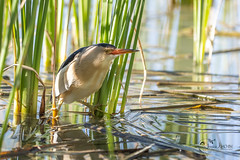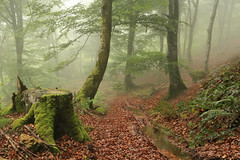This is the third is our series of objections to the LVRPA’s plans for a new ice centre on the Lea Bridge Road. It has been written by Julian.
Part 1
10/03/2020
dmconsultations@walthamforest.gov.uk
Dear Sir/Madam
I wish to object to this planning application Lea Valley Ice Centre, Lea Bridge Road, Leyton, London, E10 7QL. Application ID: 194162.
- I consider the present site is unsuitable for the expanded Ice Centre.
- I have to note the cynicism of the Lea Valley Regional Park Authority (LVRPA) in submitting two applications, presented by professional staff paid out of public funds, for the Waterworks music event at the same time as this one, thereby creating difficulties for those members of the community taking time out from their everyday lives to object. Any authority worth its salt should aim to facilitate consultation and participation in decisions of this kind. The LVRPA fails, yet again, to measure up.
- The LVRPA owns an alternative site at Eton Manor. It is fully aware of the existence of that site and has attempted to argue that it is less suitable than the site at Leyton Marsh. I do not see how such an argument can be sustained.
- Both sites are Metropolitan Open Land (MOL). In principle this means that neither site should be developed unless there are Very Special Circumstances.
- The LVRPA has failed to show any Very Special Circumstances for the Leyton Marsh site.
- Interestingly the LVRPA is trying to develop the Eton Marsh site, despite it being MOL, as a hotel.
- If it is the case that the Eton Manor site can be considered suitable for a hotel, despite it being MOL, then plainly it must be suitable for a sports centre.
- Given that the site is next to an existing sports centre, the Hockey and Tennis Centre, also owned by the LVRPA, this should make this site an instant shoe-in if the LVRPA is serious about its claim to be serving the public by providing facilities. In no way does building a hotel fit with that mandate.
- I consider the arguments for the suitability of the Eton Manor site to be overwhelming and that the relocation of the Ice Centre to that site will produce important benefits for Leyton Marsh and the surrounding area, benefits which will also be spread to other parts of the boroughs of Waltham Forest and Hackney.
- Waltham Forest Council has itself, on occasion, commented on the undesirability of the present Ice Centre. Both Waltham Forest Council’s ‘Green Belt and Metropolitan Open Land Review’ and the ‘Waltham Forest Focussed Green Belt and Metropolitan Open Land Assessment’ have considered the present Ice Centre to be an inappropriate development and that it would not have been granted permission if brought forward for permission now.
- Waltham Forest Council’s ‘Green Belt and Metropolitan Open Land Review’ even says, see para. 5.16, ‘it supports such relocation as this would provide an opportunity to rationalise the land uses in MOL3 and enhance the sense of openness, particularly views north-south along the Lea Valley’.
- The most important reason for finding Eton Manor a more suitable site for the Ice Centre is the radically different transport opportunities available at that site by comparison with the present location. There is simply no comparison in this respect between the two sites.
- Improved transport connections would be a massive benefit to the Ice Centre itself as they mean it can attract a much larger user group from a much wider catchment area.
- To understand these greatly improved transport connections available at Eton Manor that site has to be understood in terms of its connection to the Stratford Regional Station and the two bus stations in Stratford Town Centre and at Stratford City.
- Stratford is one of the best connected train stations in London and actually in Britain, listed 7th in the UK see link below. Stratford links the Overground, the Central Line, the District and the Hammersmith and City Lines (one stop away at Mile End), the Jubilee Line, the DLR from Canary Wharf and beyond, the mainline up into Hertfordshire and out to Essex and into Liverpool Street https://en.wikipedia.org/wiki/List_of_busiest_railway_stations_in_Great_Britain. The figures are collected by the Office of Rail and Road. In addition, the International Station also runs out into Kent and through the Tube network Stratford is linked to all London’s mainline stations.
- In addition, Stratford is incredibly well connected with buses from all over connecting at the Stratford bus station and Stratford City bus station, see the attached map https://web.archive.org/web/20170116154141/http://content.tfl.gov.uk/bus-route-maps/stratford-a4-0916.pdf. Stratford is also served by National Express coaches.
- Stratford Station and the two bus stations are linked to Eton Manor by the 308 bus. Almost anyone wanting to get to Eton Manor can do so easily by getting to Stratford by train or tube and taking the 308. If there was a need for a further transport connection, which there should not be, the LVRPA could run a mini bus service from Stratford to its Eton Manor facilities and to the Velopark just as Here East does.
- The 308 runs from Wanstead to Clapton, see 308 bus route, and also connects with the Stratford International train station.
- In addition, Eton Manor is also served by the W15 bus route which in turn is only a short walk to connect with the Central Line at Leyton, see the map in this link Leyton High Road / Leyton Station.
- Bus Routes 158, 58 and 69 all connect with the W15 where they intersect near Leyton Tube station, connecting areas in Waltham Forest up to Chingford and east out to East Ham and south to Plaistow and other parts of Newham.
- If it is situated at Eton Manor the Ice Centre remains a local facility easily accessible to local users. If anything it becomes easier for people in East London to access as Stratford and its wider bus network makes it easier for people to get to Eton Manor than to Leyton Marsh.
- The present Ice Centre is served by two minor railway stations, which cannot in any way compare to either Stratford station or Leyton Tube station, and the buses connecting those stations to Lea Bridge Road. The numbers travelling using those stations are minuscule by comparison with those using Stratford station. Leyton Tube station is also an important stop on the Central Line.
- In addition, the Lea Bridge line goes to Stratford and the 308 bus goes to Clapton so both of those starting points for the Leyton Marsh site are covered by connections to Stratford and, in the case of the 308, directly to Eton Manor.
- These connections mean public transport becomes a much easier and more sensible way to get to the Ice Centre if it is located at Eton Manor thus reducing car use and the associated problems of congestion and pollution.
- So not only does Eton Manor favour the use of public transport, which is a benefit in itself, but the LVRPA is likely to get far more users attending at Eton Manor as public transport connections via Stratford open the centre up to a much larger catchment both inside and outside London.
- Regarding access by car Eton Manor is of course also much closer to the M/11/12/A12 link meaning that distance traffic will be much less disruptive to the local area as it can move easily in and out of the area without impacting on local roads, also meaning pollution and congestion will be eased.
- The plans for the Ice Centre on its present site are simply unsustainable. The current use of the Ice Centre stands at 279,000 a year. Of these only a third are Waltham Forest and Hackney residents. The intention is to double capacity. Given that this will mean a lot more people coming from outside the area it is imperative to provide much better public transport connections.
- It is simply impossible to achieve these at the present location given the extremely limited bus and train services available. The result has to be greatly increased car use with much worse congestion and pollution in Lea Bridge Road and neighbouring streets and areas.
- Eton Manor, on the other hand, can provide these public transport improvements.
- For both Waltham Forest and Hackney, moving the Ice Centre has benefits for traffic on Lea Bridge Road in terms of the reduction in traffic congestion and pollution on that road and removing traffic, and thus congestion and pollution, from other connected Waltham Forest and Hackney streets. The reduced traffic will also improve the flow of public transport in Lea Bridge Road and connected streets.
- The relocation of the Ice Centre will also provide more open space for people to enjoy at Leyton Marsh with its associated benefits for the health and well being of people in the area.
- The benefits of enjoying nature for people’s physical and mental health are well documented. Walking is the easiest and most popular form of exercise. Opening up this space will help develop and protect the Lea Valley Park in this area of London as the Green Lung it is supposed to be.
- Other sports centres in the Olympic Park like the Tennis and Hockey Centre and the Velopark facilities already belong to the LVRPA so having the Ice Centre there will allow for synergies making it possible for the LVRPA to efficiently plan better access for all its centres and create link ups between programmes for the different centres in order to increase usage, all things the LVRPA should be seeking to do now with its existing sports centres in the Olympic Park.
- Taking the planning restrictions on development on MOL into account and the immense benefits to the Ice Centre in moving it to Eton Manor in terms of access and the synergies such a move creates there is really no comparison between these two sites. Eton Manor outclasses Leyton Marsh in every respect.
- Taking into account the benefits of removing the Ice Centre from Leyton Marsh in terms of the reduction in pollution and congestion in Lea Bridge Road and neighbouring streets, the provision of more open space and the associated benefits to the health and well being to local people, and the protection of the Marshes as north-east London’s green lung Eton Marsh has to be considered by far the more desirable location for this facility.
- Planning permission for this application should be refused.
Yours faithfully
Julian Cheyne
Part 2
Dear Sir/Madam
Planning application Lea Valley Ice Centre, Lea Bridge Road, Leyton, London, E10 7QL. Application ID: 194162
I wish to add to my objection regarding the application by the Lea Valley Ice Centre, as in my previous email.
Car park
-
- First, I consider the applicant is being misleading in their description of the car park they intend to create. They refer to 155 spaces for cars. However, their description of the size or capacity of the car park is actually 200 parking spaces with capacity for more, an extra capacity which is not defined but it seems could be considerably greater.
- 4.5 of the planning statement refers to “The desired footprint can be comfortably provided on the existing site, has room for 200 parking spaces (plus potential ability to also use the immediate surrounding area for parking if necessary)” https://bit.ly/3ksx81E. This doesn’t provide an actual figure for how many cars could be parked there but it seems it could be considerably more than 200 and far more than 155.
Amendment
Please note the document https://bit.ly/2PGLai1 includes a diagram at 3.11 which shows the car park has 220 spaces. So this is actually the starting point. The area in which the car park can expand is in addition to that area as the space made available for parking in this diagram is set out in the diagram. It is not declared to an ‘immediate surrounding area’. So the applicants have actually produced three numbers for the size of the car park. How can any of this be relied on?
-
- As things stand they say the Ice Centre is operating at 100% capacity. Regarding parking it has a total of 307 spaces. “To the west of the building is a car park formed of hardstanding which provides for 177 spaces. The area immediately to the front of the ice centre is currently used as an overflow car park and provides an additional 130 parking spaces. In total, the ice centre is served by 307 car parking spaces.”
- It is unclear whether operating at 100% capacity means the car park is also 100% full. However, the Ice Centre is claiming it will be able to reduce car usage by just under 50%, based on these two figures of a reduction from 307 to 155 spaces.
- However, in reality it has a much greater capacity, a capacity which is not actually made plain.
- It has to be asked whether they will be able to meet their target reduction to reduce parking to 155 spaces or whether they will be obliged to use the extra capacity.
- In fact it has be asked whether they will be able to achieve any reduction at all.
Increase in activities and visitors
-
- Second, it seems the Ice Centre expects an increase in numbers using the facility. I have not found an analysis of expected future usage. It may be there. There are a lot of documents to get through.
- However, taking it that the Centre says is already operating at 100% capacity and is therefore apparently bursting at the seams the whole plan is presented on the basis that a larger facility is needed to cope with this level of demand. Therefore it is based on the premise that the Centre needs to be larger to accommodate more users.
- The Centre refers to the growth of populations in the Boroughs and areas from which it draws users. In the Planning Statement https://bit.ly/3fEhtsO it states “10.27 To put this ‘need’ further into context, since the current ice centre was consented in 1984, London’s population has increased by 1.5 million (22%) and the boroughs of Waltham Forest and Hackney have seen a population increase of 27%. In this time, the ice centre has accumulated a large interest group and is a well-known establishment for providing ice related activities and opportunities.” Again the point is there is a growing population to cater for and the Ice Centre is a well known facility in the region likely to attract visitors from this growing population.
- Paras 6.11 to 6.13 make similar points about rising numbers of visitors to the LVRPA’s facilities and rising populations in relevant Boroughs.
- Para 10.5 makes similar points about the need for an “expansion of services and ice activities” all of which implies an increase in the numbers of visitors; “The operational capacity of the existing ice centre is a key driver of the need to replace the current facility, as in order to provide an expansion to the services and ice activities currently provided, additional ice space would be required which can only be delivered by the provision of an additional ice pad.” Another ice pad will not just help to meet existing demand but will allow for an expansion of services meaning it will draw in new users, new visitors.
- Para 10.55 of the Planning Statement provides further detail on how the second pad will provide further opportunities to enable more members to join hockey and skating clubs and to expand their activities, such as hockey practice: “Having a second pad will allow the hockey and skating clubs additional hours across the two pads. This will create capacity that will enable those on club waiting lists the opportunity to join. The indicative timetable at Appendix 8 demonstrates how, across the two pads, the number of days able to offer hockey practice, particularly junior hockey, will increase. There is also an enhanced ‘Learn to Skate’ programme and more patch ice time.”
- Para 10.57 refers to the opportunities to accommodate new ice sports: “Providing a second ice pad will also allow for opportunities to accommodate other ice sports such as speed skating, sledge hockey and recreational curling. British Ice Skating (BIS) and the English Ice Hockey Association (EIHA) have confirmed that there is significant latent demand for these uses, with potential for a new twin pad to meet a wider strategic need beyond London.”
- This section refers to meeting a wider strategic need “beyond London”. Plainly this implies further visitors travelling from greater distances, almost certainly by car. Accommodating new sports suggests a major expansion in usage.
- Para 10.58 reinforces the point referring to a “strong potential to grow” youth hockey and the Centre having a “strong hockey development market”. “The EIHA is the governing body responsible for the administration of all ice hockey in England and Wales. It is responsible for senior divisions below Elite League level, British Universities Ice Hockey Association, women’s ice hockey, recreational ice hockey and junior ice hockey. The EIHA have confirmed that the proposed replacement ice centre would have a strong hockey development market. It also suggested that it has strong potential to grow youth hockey system, currently limited by a lack of ice time.”
- Para 10.59 goes even further declaring a second pad “would deliver on a national requirement”. “Being able to accommodate additional ice sports would fulfil the Park Authority’s remit by increasing the regional profile, but this cannot be achieved without the addition of a second ice pad. Furthermore, by creating a second fully accessible Olympic twin pad in the UK would deliver on a national requirement.” It seems the Ice Centre envisages its expanded facility attracting users from across the nation.
More visitors, reduced parking – how does this add up?
-
- Third, taking all these statements into account the Ice Centre is expecting an expansion in users, it could be said a considerable expansion given not just the expansion in local populations but taking into account its ambitions to reach out to new sports and that these sports would not just be in its traditional catchment areas but “beyond London” and even “across the nation”.
- It has to be asked how the Leyton Marsh location can meet the travel needs of an expanding number of visitors or how the Ice Centre will be able to reduce the number of car parking spaces when it expects more people to visit and with new visitors to be coming from further afield, almost certainly by car.
- It seems optimistic, to say the least, for the Ice Centre to accommodate a greater number of visitors on its existing car park, let alone on a smaller car park.
- It has to be expected that Centre will have to make use of the real capacity of the car park at over 200 and will almost certainly have to expand onto the extra space referred to to cope with the demand.
- The figure of 155 car parking spaces is simply unreliable on the basis of the plans put forward by the applicant.
Travel Plan
- Fourth, it has to be asked whether the Ice Centre has any realistic plans to meet the challenge set out above.
- 5.2 of the Travel Plan https://bit.ly/2DwBjck makes several proposals of which the most significant are the following two paragraphs:
- increase the proportion of trips made to/from the Development by walking, cycling and public transport;
- reduce the total proportion of trips made to/from the Development by private car, which would also include a shift from single occupancy car use towards multiple occupancy car use;
- So essentially the Ice Centre’s plan is an education programme to encourage users to change their ways of getting to the Ice Centre.
- The first point that has to be made is they produce no evidence to show how effective such an education programme is likely to be.
- Most education programmes of this kind are run by public authorities or those with the power to influence behaviour in a number of ways, by increasing the availability of public transport, levying fines, increasing prices, running events to introduce people to cycling and such like. The Ice Centre has only one of these at its disposal, increasing prices for parking at its car park. It will produce leaflets and talk to users in the hope of persuading them to change their mode of transport but this is likely to be a pretty hit and miss project. No doubt some will want to make the effort to share their car but whether this can happen will depend on a variety of circumstances about when they travel, how easy it is to arrange, etc. It is hard to see that much reliance can be placed on such a programme to achieve more than limited results.
- Public transport. The Ice Centre has no control over the availability of public transport. If it does not meet users needs then no amount of urging its use will help.
- Buses. The first thing to note is that the options for public transport have decreased with the closure of the 48 bus route. Buses are used by a considerable number of users, but the loss of one service will reduce the numbers able to travel by this means.
- Trains. The second point is to note the findings of the traffic surveys that virtually no-one has been using trains to get to the Ice Centre and predictions from their surveys are that this is not going to change. If trains do not reach the areas from which people are travelling then no amount of urging people to use them is going to help. It seems trains are not a viable option for nearly all users.
- Given that public transport options have worsened the Centre will have to persuade more to walk, cycle or car share.
- Walking and cycling are only an option for those living relatively closely to the Centre. It is likely the Centre will be able to persuade a few more people to take up cycling as it is an increasingly popular means of getting about. But there are limits on how far people can cycle and a fair number will already be doing this so it is unlikely that there will be a great expansion of numbers.
- The Centre emphasises it will be increasing the number of cycle parking spots. While this may encourage some who have been worried about securing their bikes the reality is people are used to securing their bikes to any number of different kinds of railings and other street furniture. It is unclear that this in itself will lead to a great expansion in the number of cyclists.
- Walking is even more dependent on closeness. It is likely, simply to save money, that most of those who can get to the Centre by walking are already doing so.
- Car use. The Centre is anticipating an increase in the number of users, both in line with the rising populations of the different boroughs and because it plans to expand the number of events. This expansion is expected to include areas outside London and even nationally. It seems likely that most of this expansion will be in areas further away from the Centre as it is well known locally and has probably reached most of those likely to attend in that area. Given that these extra users are likely to be travelling from a greater distance and given that trains do not seem to meet the needs of those travelling to the Centre it can be expected that most, if not all, of these new users will be coming by car.
- The Centre could impose severe price rises on parking to discourage car use. There is no indication they intend to do this. Plainly if they did and users did not have other options to get to the Centre then this would simply put people off coming, the exactly opposite of what they are trying to achieve.
- One irony is that the LVRPA has another car park within walking distance at the Waterworks which is free so users who were prepared to complete their journey with a short walk could simply park there. This would not reduce car usage and pollution but might hide it in their statistics.
- So the only real means of reducing car usage available to the Ice Centre is to encourage car sharing. They provide no evidence that education programmes by a Centre of this kind will produce any meaningful change in behaviour. Even if there are some who will make the effort, and I have to assume there will be some even if because they may be able to save some money by sharing costs, such efforts will depend on a wide range of factors such as times of travel, how easy it is to pick up those getting a lift, etc. There is no real indication that such a programme will make a significant dent in the numbers travelling by car.
- This is an unresearched plan with no evidence to show it will or can be effective. In addition it is put forward when the numbers using the Centre are expected to rise considerably.
- Given the wholly unsatisfactory nature of this travel plan and the problems it reveals it cannot be expected that the Ice Centre will be able to reduce the number of cars parking at the Ice Centre in the ways suggested.
- This brings me back to the car park. The car park as described is misleading. The real car park is set out in the section referred to at the start: “The desired footprint can be comfortably provided on the existing site, has room for 200 parking spaces (plus potential ability to also use the immediate surrounding area for parking if necessary)”. The car park has at least 200 spaces. The “potential ability to use the immediate surrounding area” fails to describe how many more spaces this will provide. However, given that the present car park has 307 spaces on the basis of present numbers and as it seems likely given that more people will be travelling from further afield the chances are even this “extra surrounding area” will be inadequate to meet the demand.
- The Ice Centre simply fails to explain how it is going to cope with the numbers it expects to attract with an expanded Centre providing new events and facilities for an expanded catchment area and an expanding population on a confined site.
- This objection is supplementary to the points made in my earlier objection which highlighted the vastly greater public transport connections and, indeed, road connections at Eton Manor. One point I forgot to mention in that objection is that Stratford also provides an enormous parking overflow capacity at Westfield, so if there is any shortage of parking at Eton Manor people can park at Westfield and take the 108 bus to the Ice Centre.
Julian Cheyne











